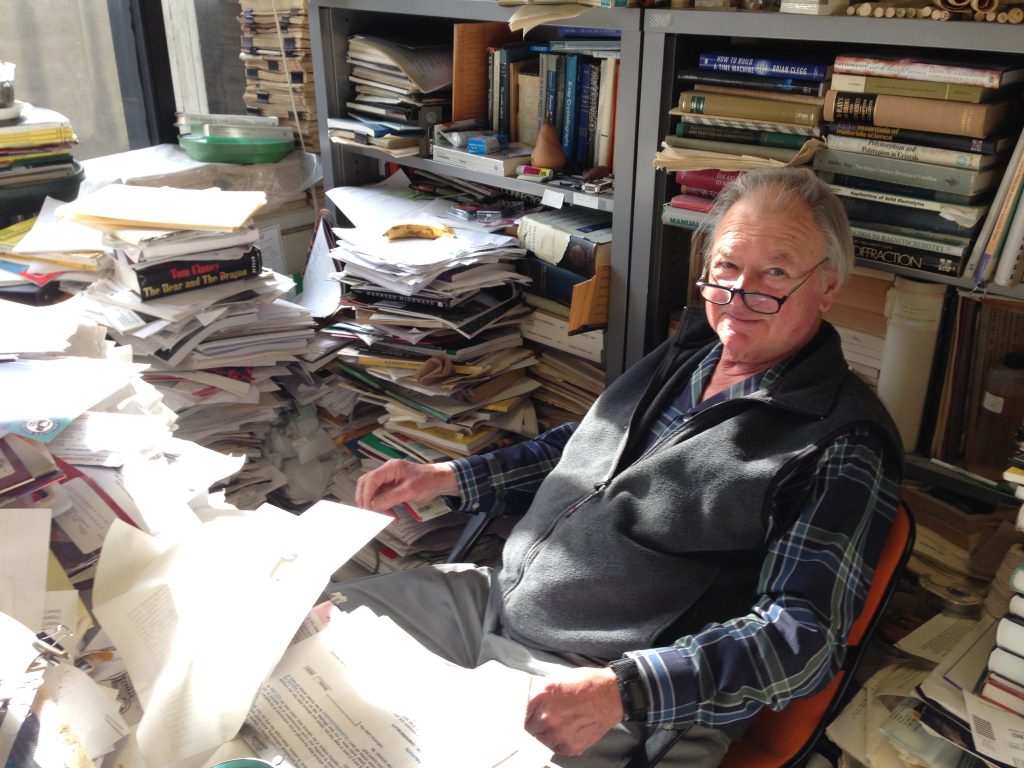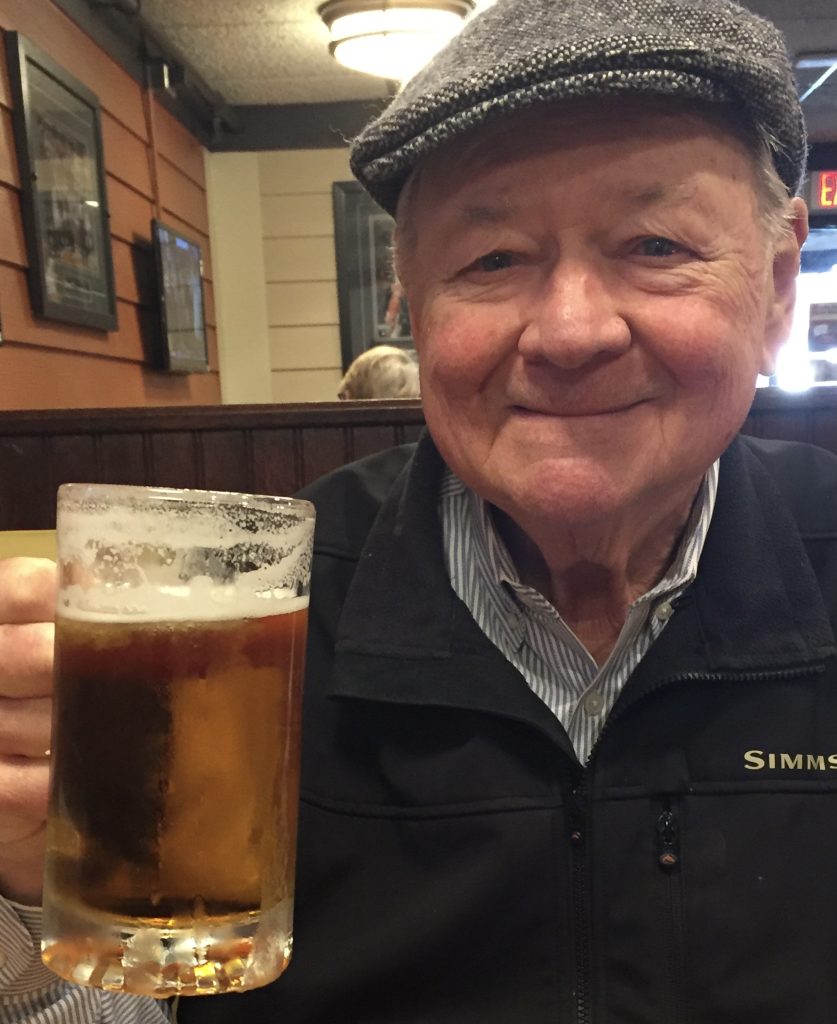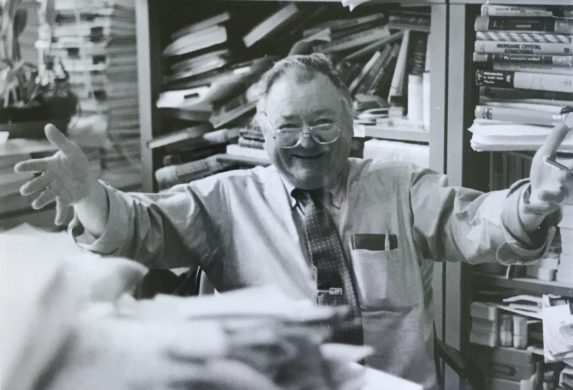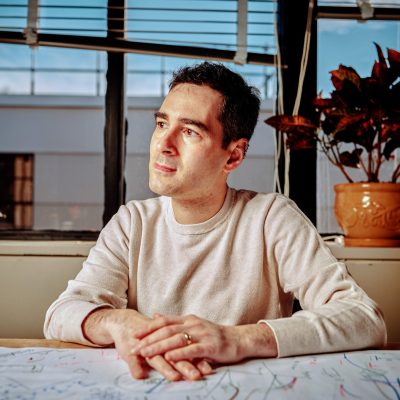Bernhardt Wuensch, crystallographer and esteemed educator, dies at 90
MIT Professor Emeritus Bernhardt Wuensch, a crystallographer and beloved teacher whose warmth and dedication to ensuring his students mastered the complexities of a precise science matched the analytical rigor he applied to the study of crystals, died this month in Concord, Massachusetts. He was 90.
Remembered fondly for his fastidious attention to detail and his office stuffed with potted orchids and towers of papers, Wuensch was an expert in X-ray crystallography, which involves shooting X-ray beams at crystalline materials to determine their underlying structure. He did pioneering work in solid-state ionics, investigating the movement of charged particles in solids and underpins technologies critical for batteries, fuel cells, and sensors. In education, he carried out a major overhaul of the curriculum in what is today MIT’s Department of Materials Science and Engineering (DMSE).
Despite his wide-ranging research and teaching interests, colleagues and students say, he was a perfectionist who favored quality over quantity.
“All the work he did, he wasn’t in a hurry to get a lot of stuff done,” says DMSE’s Professor Harry Tuller. “But what he did, he wanted to ensure was correct and proper, and that was characteristic of his research.”
Born in Paterson, New Jersey, in 1933, Wuensch first arrived at MIT as a freshman in the 1950s. He earned a bachelor’s and master’s in physics before switching to crystallography and getting a PhD from what was then the Department of Geology (now Earth and Planetary Sciences). He joined the faculty of the Department of Metallurgy in 1964 and saw its name change twice over his 46 years, retiring from DMSE in 2011.
As a professor of ceramics, Wuensch was a part of the 20th-century shift from a traditional focus on metals and mining to a broader class of materials that included polymers, ceramics, semiconductors, and biomaterials. In a 1973 letter supporting his promotion to full professor, then-department head Walter Owen credits Wuensch for contributing to “a completely new approach to the teaching of the structure of materials.”
His research led to major advancements in understanding how atomic-level structures affect magnetic and electrical properties of materials. For example, Tuller says, he was one of the first to detail how the arrangement of atoms in fast-ion conductors—materials used in batteries, fuel cells, and other devices—influences their ability to swiftly conduct ions.
Wuensch was a leading light in other areas, including diffusion, the movement of ions in materials such as liquids or gases, and neutron diffraction, aiming neutrons at materials to collect information about their atomic and magnetic structure.
Tuller, a DMSE faculty member for 49 years, tapped Wuensch’s expertise to study zinc oxide, a material used to make varistors, semiconducting components that protect circuits from high-voltage surges of electricity. Together, Tuller and Wuensch found that in such materials ions move much more rapidly along the grain boundaries—the interfaces between the crystallites that make up these polycrystalline ceramic materials.
“It’s what happens at those grain boundaries that actually limits the power that would go through your computer during a voltage surge by instead short-circuiting the current through these devices,” Tuller says. He credits the partnership with Wuensch for the knowledge. “He was instrumental in helping us confirm that we could engineer those grain boundaries by taking advantage of the very rapid diffusivity of impurity elements along those boundaries.”
In recognition of his accomplishments, Wuensch was elected a fellow of the American Ceramics Society and the Mineralogical Society of America and belonged to other professional associations, including The Electrochemical Society and Materials Research Society. In 2003 he was awarded an honorary doctorate from South Korea’s Hanyang University for his work in crystallography and diffusion-related phenomena in ceramic materials.

“A great, great teacher”
Known as “Bernie” to friends and colleagues, Wuensch was equally at home in the laboratory and the classroom. “He instilled in several generations of young scientists this ability to think deeply, be very careful about their research, and be able to stand behind it,” Tuller says.
One of those scientists is Sossina Haile, the Walter P. Murphy Professor of Materials Science and Engineering at Northwestern University, a researcher of solid-state ionic materials who develops new types of fuel cells, devices that convert fuel into electricity.
Her introduction to Wuensch, in the 1980s, was his class 3.13 (Symmetry Theory). Haile was at first puzzled by the subject, the study of the symmetrical properties of crystals and their effects on material properties. The arrangements of atoms and molecules in a material is crucial for predicting how materials behave in different situations—whether they will be strong enough for certain uses, for example, or can conduct electricity—but to an undergraduate it was “a little esoteric.”
“I certainly remember thinking to myself, ‘What is this good for?’” Haile says with a laugh. She would later return to MIT as a PhD student working alongside Wuensch in his laboratory with a renewed perspective.
“He just made seemingly esoteric topics really interesting and was very astute in knowing whether or not a student understood.” Haile describes Wuensch’s articulate speech, “immaculate” handwriting, and detailed drawings of three-dimensional objects on the chalkboard. She notes that his sketches were so skillful that students felt disappointed when they looked at a figure they tried to copy in their notebooks.
“They couldn’t tell what it was,” Haile says. “It felt really clear during lecture, and it wasn’t clear afterwards because no one had a drawing as good as his.”
Carl Thompson, the Stavros V. Salapatas Professor in Materials Science and Engineering at DMSE, was another student of Wuensch’s who came away with a broadened outlook. In 3.13, Thompson recalls Wuensch asking students to look for symmetry outside of class, patterns in a brick wall or in subway station tiles. “He said, ‘This course will change the way you see the world,’ and it did. He was a great, great teacher.”
In a 2005 videorecorded session of 3.60 (Symmetry, Structure, and Tensor Properties of Materials), a graduate class that he taught for three decades, Wuensch writes his name on the board along with his telephone extension number, 6889, pointing out its rotational symmetry.
“You can pick it up, turn it head over heels by 180 degrees, and it’s mapped into coincidence with itself,” Wuensch says. “You might think I would have had to have fought for years to get it, an extension number like that, but no. It just happened to come my way.”
(The class can be watched in its entirety on MIT OpenCourseWare.)
Wuensch also had a whimsical sense of humor, which he often exercised in the margins of his students’ papers, Haile says. In a LinkedIn tribute to him, she recalled a time she sent him a research manuscript with figures that was missing Figure 5 but referred to it in the text, writing that it plotted conductivity versus temperature.
“Bernie noted that figures don’t plot; people do, and evidently Figure 5 was missing because ‘it was off plotting somewhere,’” Haile wrote.
Reflecting on Wuensch’s legacy in materials science and engineering, Haile says his knowledge of crystallography and the manual analysis and interpretation he did in his time was critical. Today, materials science students use crystallographic software that automates the algorithms and calculations.
“The current students don’t know that analysis but benefit from it because people like Bernie made sure it got into the common vernacular at the time when code was being put together,” Haile says.

A multifaceted tenure
Wuensch served DMSE and MIT in innumerable other ways, serving on departmental committees on curriculum development, graduate students, and policy, and on School of Engineering and Institute-level committees on education and foreign scholarships, among others. “He was always involved in any committee work he was asked to do,” Thompson says.
He was acting department head for six months starting in 1980, and from 1988 to 1993 he was the director of the Center for Materials Science and Engineering, an earlier iteration of today’s Materials Research Center.
For all his contributions, there are few things Wuensch was better known for at MIT than his office in Building 13, which had shelves lined with multicolored crystal lattice models, representing the arrangements of atoms in materials, and orchids he took meticulous care of. And then there was the cityscape of papers, piled in heaps on the floor, on his desk, on pullout extensions. Thompson says walking into his office was like navigating a canyon.
“He had so many stacks of paper that he had no place to actually work at his desk, so he would put things on his lap—he would start writing on his lap,” Haile says. “I remember calling him at one point in time and talking to him, and I said, ‘Bernie, you’re writing this down on your lap, aren’t you?’ And he said, ‘In fact, yes, I am.’”
Wuensch was also known for his kindness and decency. Angelita Mireles, graduate academic administrator at DMSE, says he was a popular pick for graduate students assembling committees for their thesis area examinations, which test how prepared students are to conduct doctoral research, “because he was so nice.”
That said, he had exacting standards. “He expected near perfection from his students, and that made them a lot deeper,” Tuller says.
Outside of MIT, Wuensch enjoyed tending his garden; collecting minerals, gemstones, and rare coins; and reading spy novels. Other pastimes included fishing and clamming in Maine, splitting his own firewood, and traveling with his wife, Mary Jane.
Wuensch is survived by his wife; son Stefan Wuensch and wife Wendy Joseph; daughter Katrina Wuensch and partner Jason Staly; and grandchildren Noemi and Jack.
Friends and family are invited to a memorial service Sunday, April 28, at 1:30 pm at Duvall Chapel at 80 Deaconess Road in Concord, Massachusetts. Memories or condolences can be posted at https://obits.concordfuneral.com/bernhardt-wuensch.




